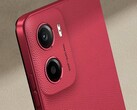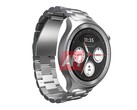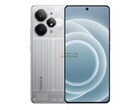Conclusion on the Motorola Edge 60 Pro
Motorola gets a lot of things right with the Edge 60 Pro. Thanks to the good triple camera with optical zoom, the high-performance MediaTek Dimensity 8350, the very bright display and long battery life, it can easily hold its own against the mid-range competition. There are also advantages such as fast WiFi 6E, plenty of storage space and lots of Bluetooth codecs. The complete package is also available at a fair price.
One criticism of the Edge 60 Pro is the update supply, which will be discontinued in 2029. If you really push the Motorola phone, it can also get uncomfortably warm. This does not happen with the cheaper Edge 60 sister model. Thanks to its very similar camera and memory features, it is also a real alternative to the Edge 60 Pro despite its slightly slower SoC and shorter battery life.
Pros
Cons
Price and availability
The Edge 60 Pro costs in the Motorola webshop 600 Euros (~$706). You can pay significantly less at other online retailers and get the smartphone for well under 550 Euros (~$648), for example at Amazon.
Table of Contents
- Conclusion on the Motorola Edge 60 Pro
- Specifications
- Case - Edge 60 Pro with AI button and Pantone colors
- Features - Lots of memory for the Motorola cell phone
- Software - Android 15 with Moto AI and updates until 2029
- Communication and GNSS - Edge 60 Pro with fast WiFi 6E
- Phone functions and voice quality
- Cameras - Triple camera with 3x optical zoom
- Accessories and warranty - The 90-watt power supply costs extra
- Input devices and operation - Fast fingerprint sensor
- Display - P-OLED screen with more than 4000 nits
- Performance - Motorola Edge 60 Pro with MediaTek SoC
- Games - 60 FPS are realistic
- Emissions - noticeable heating under continuous load
- Battery life - Edge 60 Pro with 6000 mAh battery and good endurance
- Notebookcheck overall rating
- Comparison of possible alternatives
The Edge 60 Pro is at the top of Motorola's Edge series and does a lot better than its predecessor. With the Edge 50 Pro the periscope zoom was removed, but it is back in the test candidate. The Edge 60 Pro also costs significantly less despite having better hardware. We find out how well the mid-range smartphone fares against the competition in our test.
Specifications
Case - Edge 60 Pro with AI button and Pantone colors
Thanks to its rubberized back cover, the Edge 60 Pro, which weighs 186 grams (~6.6 oz) and has a high-quality finish, is very comfortable to hold. Its IP69 certification also makes the curved smartphone waterproof and dustproof. The AI button on the long left side launches Motorola's in-house Moto AI.
In the blue color variant Dazzling Blue, the back cover imitates a nylon texture, while our test device (Sparkling Grape), which is a vibrant purple, and the third, more subtle color variant Shadow each have a faux leather finish.
Features - Lots of memory for the Motorola cell phone
With 12 GB RAM and 512 GB mass storage, the Edge 60 Pro has a good memory configuration and officially costs 600 Euros (~$706). Unlike the Edge 60 the internal memory cannot be expanded using a microSD card.
Software - Android 15 with Moto AI and updates until 2029
The Edge 60 Pro starts with Android 15, which Motorola has left virtually untouched apart from a handful of its own apps. The smartphone receives 3 OS upgrades and 4 years of security updates. However, compared to the support offered by competitors such as Google and Samsung (6 and 7 years respectively), this is not all that long.
Motorola's in-house AI Moto AI summarizes messages, transcribes audio recordings and saves notes along with screenshots and photos. Google Gemini and Google Circle to Search are also included. A Motorola account is required to use Moto AI.
Sustainability
Motorola has opted for plastic-free packaging for the Edge 60 Pro, which is printed with soy ink and made from recycled materials in accordance with FSC Mix certification.
Motorola provides comprehensive information about its sustainability efforts on its website, but not about the smartphone's carbon footprint. Spare parts and instructions for self-repair are not available.
Communication and GNSS - Edge 60 Pro with fast WiFi 6E
The Edge 60 Pro supports WiFi 6E, Bluetooth 5.4 and NFC. It is also well positioned in terms of mobile phone frequencies, so you shouldn't have any reception problems even when traveling in other EU countries.
With our reference router Asus ROG Rapture GT-AXE11000, the Edge 60 Pro achieves quite stable Wi-Fi transfer rates, reaching a peak of 1574 MB/s.
| Networking | |
| Motorola Edge 60 Pro | |
| iperf3 transmit AXE11000 6GHz | |
| iperf3 receive AXE11000 6GHz | |
| Google Pixel 9 | |
| iperf3 transmit AXE11000 | |
| iperf3 receive AXE11000 | |
| iperf3 transmit AXE11000 6GHz | |
| iperf3 receive AXE11000 6GHz | |
| Motorola Edge 50 Pro | |
| iperf3 transmit AXE11000 6GHz | |
| iperf3 receive AXE11000 6GHz | |
| OnePlus 13R | |
| iperf3 transmit AXE11000 | |
| iperf3 receive AXE11000 | |
| iperf3 transmit AXE11000 6GHz | |
| iperf3 receive AXE11000 6GHz | |
| Samsung Galaxy S24 FE | |
| iperf3 transmit AXE11000 | |
| iperf3 receive AXE11000 | |
| iperf3 transmit AXE11000 6GHz | |
| iperf3 receive AXE11000 6GHz | |
| Xiaomi 14T | |
| iperf3 transmit AXE11000 | |
| iperf3 receive AXE11000 | |
| iperf3 transmit AXE11000 6GHz | |
| iperf3 receive AXE11000 6GHz | |
| Average 802.11 a/b/g/n/ac/ax | |
| iperf3 transmit AXE11000 | |
| iperf3 receive AXE11000 | |
| iperf3 transmit AXE11000 6GHz | |
| iperf3 receive AXE11000 6GHz | |
| Average of class Smartphone | |
| iperf3 transmit AXE11000 | |
| iperf3 receive AXE11000 | |
| iperf3 transmit AXE11000 6GHz | |
| iperf3 receive AXE11000 6GHz | |
The Edge 60 Pro performs well when it comes to navigation. In the practical test, in which we pitted it against the Garmin Venu 2 fitness smartwatch, the smartphone was often a few meters off the bike route, which was around 10 kilometers (~6.2 miles) long, but was precise enough for everyday use.
Phone functions and voice quality
A nano SIM card fits into the card slot of the Edge 60 Pro and an eSIM can also be activated for dual SIM operation. In addition to VoLTE, the phone also supports Wi-Fi calls.
The voice quality of the Motorola smartphone is impressive. Voices remain easy to understand even in hands-free mode and the noise suppression works reliably.
Cameras - Triple camera with 3x optical zoom
In addition to a 50 MP main camera and a 50 MP ultra-wide-angle camera, the Edge 60 Pro also has a 10 MP telephoto camera. The latter works with a 3x optical zoom and takes good pictures in daylight. Digital zoom is possible up to 50x, but only captures rather blurred details at higher magnification levels.
Photos taken with the main and ultra-wide-angle camera are rich in detail and contrast and are characterized by very good quality. The same applies to the 50 MP selfie camera, which is one of the best in this price range. The smartphone also records videos in good quality, but only with a maximum of 4K at 30 FPS.
Image comparison
Choose a scene and navigate within the first image. One click changes the position on touchscreens. One click on the zoomed-in image opens the original in a new window. The first image shows the scaled photograph of the test device.
DaylightDaylightUltra wide-angleLow lightIn the test lab, the main camera shows that it can capture colors quite accurately in optimal lighting. However, there is a lack of accuracy with green tones. The test chart remains fully recognizable with 1 lux of residual light.

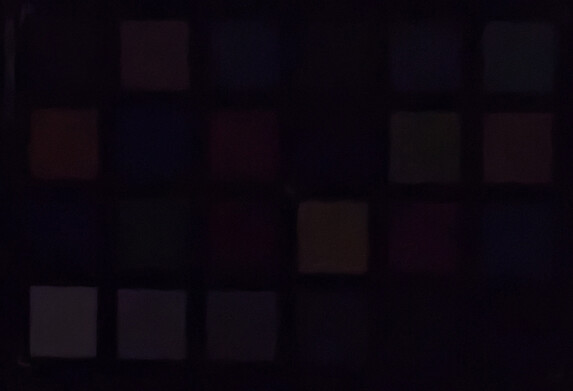
Accessories and warranty - The 90-watt power supply costs extra
The scope of delivery includes a USB-C cable, a plastic protective cover, a SIM tool and a quick start guide.
The Motorola Edge 60 Pro in the USA comes with a standard one-year limited warranty. Moto Care Accident Protection, an optional plan, can extend coverage for accidental damage.
Input devices and operation - Fast fingerprint sensor
The P-OLED screen responds quickly and precisely to inputs and, together with the 12 GB RAM and the MediaTek SoC, ensures very smooth operation.
The fingerprint sensor under the screen unlocks the smartphone quickly and did not make any mistakes in the test. The 2D face recognition via the selfie camera also works reliably.
Display - P-OLED screen with more than 4000 nits
According to Motorola, the P-OLED screen has a maximum brightness of 4500 nits. The screen does not quite reach this in the test, but still achieves an excellent 4122 cd/m² on small surfaces (APL18 measurement). The average is 1099 cd/m².
The P-OLED screen works with a relatively high DC dimming frequency of 716 Hz in all of the brightness levels we measured. Due to the high signal amplitude of 75 percent, PWM-sensitive users may still feel disturbed by PWM flickering.
| |||||||||||||||||||||||||
Brightness Distribution: 91 %
Center on Battery: 1099 cd/m²
Contrast: ∞:1 (Black: 0 cd/m²)
ΔE ColorChecker Calman: 1.25 | ∀{0.5-29.43 Ø4.79}
ΔE Greyscale Calman: 1.4 | ∀{0.09-98 Ø5}
99.3% sRGB (Calman 2D)
Gamma: 2.031
CCT: 6403 K
| Motorola Edge 60 Pro P-OLED, 2712x1220, 6.7" | Google Pixel 9 OLED, 2424x1080, 6.3" | Motorola Edge 50 Pro P-OLED, 2712x1220, 6.7" | OnePlus 13R AMOLED, 2780x1264, 6.8" | Samsung Galaxy S24 FE AMOLED, 2340x1080, 6.7" | Xiaomi 14T AMOLED, 2712x1220, 6.7" | |
|---|---|---|---|---|---|---|
| Screen | 31% | -16% | -0% | -8% | 7% | |
| Brightness middle (cd/m²) | 1099 | 2063 88% | 1064 -3% | 1213 10% | 1211 10% | 1012 -8% |
| Brightness (cd/m²) | 1073 | 1914 78% | 1038 -3% | 1206 12% | 1214 13% | 1016 -5% |
| Brightness Distribution (%) | 91 | 84 -8% | 88 -3% | 97 7% | 99 9% | 95 4% |
| Black Level * (cd/m²) | ||||||
| Colorchecker dE 2000 * | 1.25 | 0.7 44% | 1.17 6% | 1 20% | 1.6 -28% | 0.7 44% |
| Colorchecker dE 2000 max. * | 1.68 | 2.2 -31% | 2.47 -47% | 2.3 -37% | 2.4 -43% | 1.8 -7% |
| Greyscale dE 2000 * | 1.4 | 1.2 14% | 2 -43% | 1.6 -14% | 1.5 -7% | 1.2 14% |
| Gamma | 2.031 108% | 2.23 99% | 2.238 98% | 2.22 99% | 2.13 103% | 2.19 100% |
| CCT | 6403 102% | 6524 100% | 6423 101% | 6546 99% | 6456 101% | 6489 100% |
* ... smaller is better
Screen Flickering / PWM (Pulse-Width Modulation)
| Screen flickering / PWM detected | 715.7 Hz Amplitude: 75 % | ||
The display backlight flickers at 715.7 Hz (worst case, e.g., utilizing PWM) . The frequency of 715.7 Hz is quite high, so most users sensitive to PWM should not notice any flickering. In comparison: 53 % of all tested devices do not use PWM to dim the display. If PWM was detected, an average of 8152 (minimum: 5 - maximum: 343500) Hz was measured. | |||
Measurement series with fixed zoom level and different brightness settings (The amplitude curve at minimum brightness looks flat, but this is due to the scaling. The info box shows the enlarged version of the amplitude at minimum brightness)
Display Response Times
| ↔ Response Time Black to White | ||
|---|---|---|
| 1.8 ms ... rise ↗ and fall ↘ combined | ↗ 0.9 ms rise | |
| ↘ 0.9 ms fall | ||
| The screen shows very fast response rates in our tests and should be very well suited for fast-paced gaming. In comparison, all tested devices range from 0.1 (minimum) to 240 (maximum) ms. » 9 % of all devices are better. This means that the measured response time is better than the average of all tested devices (20.3 ms). | ||
| ↔ Response Time 50% Grey to 80% Grey | ||
| 18.6 ms ... rise ↗ and fall ↘ combined | ↗ 1.1 ms rise | |
| ↘ 17.5 ms fall | ||
| The screen shows good response rates in our tests, but may be too slow for competitive gamers. In comparison, all tested devices range from 0.165 (minimum) to 636 (maximum) ms. » 31 % of all devices are better. This means that the measured response time is better than the average of all tested devices (31.7 ms). | ||
Performance - Motorola Edge 60 Pro with MediaTek SoC
Equipped with the MediaTek Dimensity 8350 the Edge 60 Pro has no trouble holding its own against smartphones in the same price range in terms of performance. The Motorola phone performs particularly well in AI calculations. In prestigious benchmarks such as AnTuTu v10, with 1,409,057 points, it is not far behind the Snapdragon 8 Gen 3 of the OnePlus 13R (1,772,142 points).
| UL Procyon AI Inference for Android - Overall Score NNAPI | |
| Motorola Edge 60 Pro | |
| Average MediaTek Dimensity 8350 (58543 - 63113, n=2) | |
| Xiaomi 14T | |
| Google Pixel 9 | |
| Average of class Smartphone (3769 - 81594, n=139, last 2 years) | |
| OnePlus 13R | |
| Samsung Galaxy S24 FE | |
| Motorola Edge 50 Pro | |
| Geekbench AI | |
| Quantized TensorFlow NNAPI 1.2 | |
| Average MediaTek Dimensity 8350 (4367 - 4532, n=2) | |
| Motorola Edge 60 Pro | |
| Average of class Smartphone (123 - 13084, n=55, last 2 years) | |
| OnePlus 13R | |
| Half Precision TensorFlow NNAPI 1.2 | |
| Average MediaTek Dimensity 8350 (4364 - 4545, n=2) | |
| Motorola Edge 60 Pro | |
| Average of class Smartphone (51 - 9453, n=55, last 2 years) | |
| OnePlus 13R | |
| Single Precision TensorFlow NNAPI 1.2 | |
| Average MediaTek Dimensity 8350 (1068 - 1140, n=2) | |
| Motorola Edge 60 Pro | |
| Average of class Smartphone (51 - 2472, n=55, last 2 years) | |
| OnePlus 13R | |
| AI Benchmark - Score V6 | |
| OnePlus 13R | |
| Average of class Smartphone (55.6 - 22149, n=71, last 2 years) | |
| Motorola Edge 60 Pro | |
| Average MediaTek Dimensity 8350 (1070 - 4443, n=3) | |
| Samsung Galaxy S24 FE | |
GFXBench (DX / GLBenchmark) 2.7: T-Rex Onscreen | 1920x1080 T-Rex Offscreen
GFXBench 3.0: on screen Manhattan Onscreen OGL | 1920x1080 1080p Manhattan Offscreen
GFXBench 3.1: on screen Manhattan ES 3.1 Onscreen | 1920x1080 Manhattan ES 3.1 Offscreen
GFXBench: on screen Car Chase Onscreen | 1920x1080 Car Chase Offscreen | on screen Aztec Ruins High Tier Onscreen | 2560x1440 Aztec Ruins High Tier Offscreen | on screen Aztec Ruins Normal Tier Onscreen | 1920x1080 Aztec Ruins Normal Tier Offscreen | 3840x2160 4K Aztec Ruins High Tier Offscreen
| 3DMark / Wild Life Extreme Unlimited | |
| OnePlus 13R | |
| Samsung Galaxy S24 FE | |
| Xiaomi 14T | |
| Motorola Edge 60 Pro | |
| Google Pixel 9 | |
| Motorola Edge 50 Pro | |
| 3DMark / Wild Life Extreme | |
| OnePlus 13R | |
| Samsung Galaxy S24 FE | |
| Motorola Edge 60 Pro | |
| Xiaomi 14T | |
| Google Pixel 9 | |
| Motorola Edge 50 Pro | |
| 3DMark / Wild Life Unlimited Score | |
| OnePlus 13R | |
| Samsung Galaxy S24 FE | |
| Xiaomi 14T | |
| Motorola Edge 60 Pro | |
| Google Pixel 9 | |
| Motorola Edge 50 Pro | |
| 3DMark / Solar Bay Score | |
| OnePlus 13R | |
| Samsung Galaxy S24 FE | |
| Motorola Edge 60 Pro | |
| Xiaomi 14T | |
| Google Pixel 9 | |
| 3DMark / Solar Bay Unlimited Score | |
| OnePlus 13R | |
| Samsung Galaxy S24 FE | |
| Xiaomi 14T | |
| Motorola Edge 60 Pro | |
| 3DMark / Steel Nomad Light Unlimited Score | |
| Samsung Galaxy S24 FE | |
| OnePlus 13R | |
| Motorola Edge 60 Pro | |
| Xiaomi 14T | |
| Google Pixel 9 | |
| 3DMark / Steel Nomad Light Score | |
| Samsung Galaxy S24 FE | |
| OnePlus 13R | |
| Motorola Edge 60 Pro | |
| Xiaomi 14T | |
| Google Pixel 9 | |
| GFXBench (DX / GLBenchmark) 2.7 / T-Rex Onscreen | |
| Google Pixel 9 | |
| Samsung Galaxy S24 FE | |
| Xiaomi 14T | |
| Motorola Edge 60 Pro | |
| Motorola Edge 50 Pro | |
| OnePlus 13R | |
| GFXBench (DX / GLBenchmark) 2.7 / T-Rex Offscreen | |
| OnePlus 13R | |
| Motorola Edge 60 Pro | |
| Xiaomi 14T | |
| Google Pixel 9 | |
| Samsung Galaxy S24 FE | |
| Motorola Edge 50 Pro | |
| GFXBench 3.0 / Manhattan Onscreen OGL | |
| Google Pixel 9 | |
| Samsung Galaxy S24 FE | |
| Xiaomi 14T | |
| Motorola Edge 60 Pro | |
| Motorola Edge 50 Pro | |
| OnePlus 13R | |
| GFXBench 3.0 / 1080p Manhattan Offscreen | |
| OnePlus 13R | |
| Samsung Galaxy S24 FE | |
| Google Pixel 9 | |
| Motorola Edge 60 Pro | |
| Xiaomi 14T | |
| Motorola Edge 50 Pro | |
| GFXBench 3.1 / Manhattan ES 3.1 Onscreen | |
| Samsung Galaxy S24 FE | |
| Google Pixel 9 | |
| Motorola Edge 60 Pro | |
| Xiaomi 14T | |
| Motorola Edge 50 Pro | |
| OnePlus 13R | |
| GFXBench 3.1 / Manhattan ES 3.1 Offscreen | |
| OnePlus 13R | |
| Samsung Galaxy S24 FE | |
| Motorola Edge 60 Pro | |
| Google Pixel 9 | |
| Xiaomi 14T | |
| Motorola Edge 50 Pro | |
| GFXBench / Car Chase Onscreen | |
| Samsung Galaxy S24 FE | |
| Xiaomi 14T | |
| Motorola Edge 60 Pro | |
| Google Pixel 9 | |
| OnePlus 13R | |
| Motorola Edge 50 Pro | |
| GFXBench / Car Chase Offscreen | |
| OnePlus 13R | |
| Samsung Galaxy S24 FE | |
| Xiaomi 14T | |
| Motorola Edge 60 Pro | |
| Google Pixel 9 | |
| GFXBench / Aztec Ruins High Tier Onscreen | |
| Samsung Galaxy S24 FE | |
| Google Pixel 9 | |
| Xiaomi 14T | |
| Motorola Edge 60 Pro | |
| OnePlus 13R | |
| Motorola Edge 50 Pro | |
| GFXBench / Aztec Ruins High Tier Offscreen | |
| Samsung Galaxy S24 FE | |
| OnePlus 13R | |
| Xiaomi 14T | |
| Motorola Edge 60 Pro | |
| Google Pixel 9 | |
| Motorola Edge 50 Pro | |
| GFXBench / Aztec Ruins Normal Tier Onscreen | |
| Samsung Galaxy S24 FE | |
| Motorola Edge 60 Pro | |
| Google Pixel 9 | |
| Xiaomi 14T | |
| OnePlus 13R | |
| Motorola Edge 50 Pro | |
| GFXBench / Aztec Ruins Normal Tier Offscreen | |
| OnePlus 13R | |
| Samsung Galaxy S24 FE | |
| Motorola Edge 60 Pro | |
| Xiaomi 14T | |
| Google Pixel 9 | |
| Motorola Edge 50 Pro | |
| GFXBench / 4K Aztec Ruins High Tier Offscreen | |
| OnePlus 13R | |
| Samsung Galaxy S24 FE | |
| Xiaomi 14T | |
| Motorola Edge 60 Pro | |
| Google Pixel 9 | |
| Motorola Edge 50 Pro | |
| Jetstream 2 - 2.0 Total Score | |
| Samsung Galaxy S24 FE (Chrome 130) | |
| Average of class Smartphone (23.8 - 387, n=155, last 2 years) | |
| Average MediaTek Dimensity 8350 (111.4 - 138.7, n=3) | |
| Motorola Edge 50 Pro (Chrome 124) | |
| OnePlus 13R (Chrome 133) | |
| Motorola Edge 60 Pro (Chrome 137.0.7151.115) | |
| Google Pixel 9 (Chrome 129) | |
| Xiaomi 14T (Chrome 130.0.6723.73) | |
| Speedometer 2.0 - Result 2.0 | |
| Samsung Galaxy S24 FE (Chrome 130) | |
| Average of class Smartphone (15.2 - 643, n=131, last 2 years) | |
| Google Pixel 9 (Chrome 129) | |
| Average MediaTek Dimensity 8350 (158 - 192, n=2) | |
| Motorola Edge 60 Pro (Chrome 137.0.7151.115) | |
| Motorola Edge 50 Pro (Chrome 124) | |
| Xiaomi 14T (Chrome 130.0.6723.73) | |
| WebXPRT 4 - Overall | |
| Samsung Galaxy S24 FE (Chrome 130) | |
| Average of class Smartphone (27 - 306, n=149, last 2 years) | |
| OnePlus 13R (Chrome 133) | |
| Average MediaTek Dimensity 8350 (115 - 148, n=2) | |
| Motorola Edge 60 Pro (Chrome 137.0.7151.115) | |
| Google Pixel 9 (Chrome 129) | |
| Motorola Edge 50 Pro (Chrome 124) | |
| Xiaomi 14T (Chrome 130.0.6723.73) | |
| Octane V2 - Total Score | |
| Samsung Galaxy S24 FE (Chrome 130) | |
| Google Pixel 9 | |
| Average of class Smartphone (2228 - 121337, n=202, last 2 years) | |
| Average MediaTek Dimensity 8350 (38258 - 49086, n=4) | |
| OnePlus 13R (Chrome 133) | |
| Motorola Edge 50 Pro (Chrome 124) | |
| Motorola Edge 60 Pro (Chrome 137.0.7151.115) | |
| Xiaomi 14T (Chrome 130.0.6723.73) | |
| Mozilla Kraken 1.1 - Total | |
| Xiaomi 14T (Chrome 130.0.6723.73) | |
| Average of class Smartphone (257 - 28190, n=157, last 2 years) | |
| Motorola Edge 50 Pro (Chrome 124) | |
| Motorola Edge 60 Pro (Chrome 137.0.7151.115) | |
| OnePlus 13R (Edge 133) | |
| OnePlus 13R (Chrome 133) | |
| Average MediaTek Dimensity 8350 (847 - 1088, n=2) | |
| Google Pixel 9 (Chrome 129) | |
| Samsung Galaxy S24 FE (Chrome 130) | |
* ... smaller is better
| Motorola Edge 60 Pro | Google Pixel 9 | Motorola Edge 50 Pro | OnePlus 13R | Samsung Galaxy S24 FE | Xiaomi 14T | Average 512 GB UFS 4.0 Flash | Average of class Smartphone | |
|---|---|---|---|---|---|---|---|---|
| AndroBench 3-5 | -64% | -51% | -9% | -61% | -11% | -15% | -43% | |
| Sequential Read 256KB (MB/s) | 3852.89 | 1584.56 -59% | 1023.6 -73% | 3987.44 3% | 1783.43 -54% | 3605.16 -6% | 3675 ? -5% | 2202 ? -43% |
| Sequential Write 256KB (MB/s) | 3842.42 | 256.48 -93% | 1025.9 -73% | 3201.32 -17% | 631.23 -84% | 3294.31 -14% | 3072 ? -20% | 1819 ? -53% |
| Random Read 4KB (MB/s) | 439.58 | 226.41 -48% | 337 -23% | 374.54 -15% | 312.98 -29% | 403.97 -8% | 382 ? -13% | 292 ? -34% |
| Random Write 4KB (MB/s) | 585.66 | 266.19 -55% | 390.2 -33% | 542.13 -7% | 127.53 -78% | 493.57 -16% | 463 ? -21% | 334 ? -43% |
Games - 60 FPS are realistic
With its ARM Mali-G615 MP6-GPU, the Edge 60 Pro achieves good 3D performance. While no match for the OnePlus 13R or Samsung Galaxy S24 FE the frame rates determined with Gamebench show that the performance is easily sufficient to play current games smoothly, even in high details.
Emissions - noticeable heating under continuous load
Temperature
In the stress test with the burnout benchmark, the Edge 60 Pro gets really uncomfortably warm at up to 58.4 °C (137.12 °F). However, this extreme scenario remains the exception in everyday use.
In the 3DMark stress tests, the Edge 60 Pro can maintain its output performance for a relatively long time, but then drops sharply. After 20 test runs, only just under 40 percent of the original performance remains.
(-) The maximum temperature on the upper side is 54.7 °C / 130 F, compared to the average of 35.2 °C / 95 F, ranging from 21.9 to 247 °C for the class Smartphone.
(-) The bottom heats up to a maximum of 58.4 °C / 137 F, compared to the average of 34 °C / 93 F
(+) In idle usage, the average temperature for the upper side is 27.8 °C / 82 F, compared to the device average of 32.9 °C / 91 F.
3DMark Steel Nomad Stress Test
| 3DMark | |
| Wild Life Stress Test Stability | |
| Motorola Edge 50 Pro | |
| Xiaomi 14T | |
| Google Pixel 9 | |
| Samsung Galaxy S24 FE | |
| Motorola Edge 60 Pro | |
| OnePlus 13R | |
| Wild Life Extreme Stress Test | |
| Motorola Edge 50 Pro | |
| Google Pixel 9 | |
| Xiaomi 14T | |
| Samsung Galaxy S24 FE | |
| Motorola Edge 60 Pro | |
| OnePlus 13R | |
| Solar Bay Stress Test Stability | |
| Xiaomi 14T | |
| Samsung Galaxy S24 FE | |
| Motorola Edge 60 Pro | |
| OnePlus 13R | |
| Steel Nomad Light Stress Test Stability | |
| Google Pixel 9 | |
| OnePlus 13R | |
| Xiaomi 14T | |
| Samsung Galaxy S24 FE | |
| Motorola Edge 60 Pro | |
Speakers
The speaker on the bottom edge is amplified by the earpiece, which means that the Edge 60 Pro produces stereo sound. This remains largely without bass, but still sounds good thanks to the relatively balanced mids and highs.
Headphones or external speakers can be connected via USB-C or Bluetooth 5.4. The Edge 60 Pro supports most current Bluetooth codecs.
Motorola Edge 60 Pro audio analysis
(+) | speakers can play relatively loud (88.1 dB)
Bass 100 - 315 Hz
(-) | nearly no bass - on average 16.1% lower than median
(±) | linearity of bass is average (13.5% delta to prev. frequency)
Mids 400 - 2000 Hz
(+) | balanced mids - only 2.6% away from median
(+) | mids are linear (4.7% delta to prev. frequency)
Highs 2 - 16 kHz
(±) | higher highs - on average 7.4% higher than median
(±) | linearity of highs is average (10% delta to prev. frequency)
Overall 100 - 16.000 Hz
(±) | linearity of overall sound is average (17.2% difference to median)
Compared to same class
» 10% of all tested devices in this class were better, 8% similar, 82% worse
» The best had a delta of 11%, average was 35%, worst was 134%
Compared to all devices tested
» 31% of all tested devices were better, 8% similar, 61% worse
» The best had a delta of 4%, average was 24%, worst was 134%
Samsung Galaxy S24 FE audio analysis
(+) | speakers can play relatively loud (91.9 dB)
Bass 100 - 315 Hz
(-) | nearly no bass - on average 20.2% lower than median
(+) | bass is linear (4.9% delta to prev. frequency)
Mids 400 - 2000 Hz
(±) | reduced mids - on average 7.3% lower than median
(+) | mids are linear (6.2% delta to prev. frequency)
Highs 2 - 16 kHz
(+) | balanced highs - only 4.3% away from median
(+) | highs are linear (3.8% delta to prev. frequency)
Overall 100 - 16.000 Hz
(±) | linearity of overall sound is average (17.4% difference to median)
Compared to same class
» 12% of all tested devices in this class were better, 8% similar, 81% worse
» The best had a delta of 11%, average was 35%, worst was 134%
Compared to all devices tested
» 32% of all tested devices were better, 8% similar, 60% worse
» The best had a delta of 4%, average was 24%, worst was 134%
Battery life - Edge 60 Pro with 6000 mAh battery and good endurance
Energy consumption
The Edge 60 Pro's 6000 mAh battery can be charged with up to 90 watts. Up to 15 watts is possible via wireless charging.
We did not have Motorola's 90-watt power supply available for the test, which is why we used the Anker 317 instead (100 watts). However, the Edge 60 Pro is not really happy with this, as it takes 1.5 hours for one charging cycle, which is far too long. If the smartphone and power adapter are compatible, charging should be completed in well under an hour.
| Off / Standby | |
| Idle | |
| Load |
|
Key:
min: | |
| Motorola Edge 60 Pro 6000 mAh | Google Pixel 9 4700 mAh | Motorola Edge 50 Pro 4500 mAh | OnePlus 13R 6000 mAh | Samsung Galaxy S24 FE 4700 mAh | Xiaomi 14T 5000 mAh | Average MediaTek Dimensity 8350 | Average of class Smartphone | |
|---|---|---|---|---|---|---|---|---|
| Power Consumption | 20% | 39% | 11% | 10% | 37% | -35% | 27% | |
| Idle Minimum * (Watt) | 1.3 | 0.66 49% | 0.9 31% | 0.81 38% | 0.78 40% | 0.97 25% | 1.28 ? 2% | 0.851 ? 35% |
| Idle Average * (Watt) | 1.9 | 1.49 22% | 1.3 32% | 2.11 -11% | 1.31 31% | 1.12 41% | 3.74 ? -97% | 1.431 ? 25% |
| Idle Maximum * (Watt) | 2.4 | 1.78 26% | 1.6 33% | 2.17 10% | 1.36 43% | 1.19 50% | 4.01 ? -67% | 1.61 ? 33% |
| Load Average * (Watt) | 8.6 | 7.44 13% | 4.8 44% | 9.2 -7% | 13.23 -54% | 4.13 52% | 10.3 ? -20% | 7.08 ? 18% |
| Load Maximum * (Watt) | 14.9 | 16.64 -12% | 6.7 55% | 11.12 25% | 16.23 -9% | 12.25 18% | 14.1 ? 5% | 11.1 ? 26% |
* ... smaller is better
Power consumption: Geekbench (150 cd/m²)
Power consumption: GFXbench (150 cd/m²)
Battery life
The Edge 60 Pro is very durable in the practical battery tests. It lasts almost 22.5 hours in the Wi-Fi test. With this, it not only beats its predecessor, but outlasts most rival phones except the OnePlus 13R. The Edge 60 has no chance with its 5000 mAh battery.
| Battery runtime - WiFi v1.3 | |
| Motorola Edge 60 Pro | |
| Google Pixel 9 | |
| Motorola Edge 50 Pro | |
| OnePlus 13R | |
| Samsung Galaxy S24 FE | |
| Xiaomi 14T | |
Notebookcheck overall rating
The Motorola Edge 60 Pro offers good features for the money and scores particularly well with a large battery and a very bright curved display.
Motorola Edge 60 Pro
- 07/03/2025 v8
Manuel Masiero
Comparison of possible alternatives
Image | Model / Review | Price | Weight | Drive | Display |
|---|---|---|---|---|---|
| Motorola Edge 60 Pro MediaTek Dimensity 8350 ⎘ ARM Mali-G615 MP6 ⎘ 12 GB Memory, 512 GB | Amazon: 1. $11.99 Ibywind For Motorola Edge 60... 2. $6.98 Natbok 2 Pack 3D Compatible ... 3. $8.88 LXEEOLX [2 Pack Hydrogel Scr... List Price: 600 Euro | 186 g | 512 GB UFS 4.0 Flash | 6.67" 2712x1220 446 PPI P-OLED | |
| Google Pixel 9 Google Tensor G4 ⎘ ARM Mali-G715 MP7 ⎘ 12 GB Memory, 128 GB | Amazon: 1. $544.98 Google Pixel 9 - Unlocked An... 2. $486.97 Google Pixel 9a with Gemini ... 3. $489.00 Google Pixel 9a with Gemini ... List Price: 899€ | 198 g | 128 GB UFS 3.1 Flash | 6.30" 2424x1080 421 PPI OLED | |
| Motorola Edge 50 Pro Qualcomm Snapdragon 7 Gen 3 ⎘ Qualcomm Adreno 720 ⎘ 12 GB Memory, 512 GB UFS 2.1 | Amazon: 1. $277.94 Motorola Moto Edge 50 5G | 2... 2. $309.99 Motorola Moto Edge 50 5G | 2... 3. $562.58 Motorola Moto Edge 50 Pro 5G... List Price: 699€ | 186 g | 512 GB UFS 2.2 Flash | 6.70" 2712x1220 444 PPI P-OLED | |
| OnePlus 13R Qualcomm Snapdragon 8 Gen 3 ⎘ Qualcomm Adreno 750 ⎘ 12 GB Memory, 256 GB | Amazon: 1. $599.99 OnePlus 13R, 12GB RAM + 256G... 2. $7.99 Supershieldz (3 Pack) Design... 3. $9.00 WILLONE [2+2 Pack] for OnePl... List Price: 749€ | 206 g | 256 GB UFS 4.0 Flash | 6.78" 2780x1264 450 PPI AMOLED | |
| Samsung Galaxy S24 FE Samsung Exynos 2400e ⎘ Samsung Xclipse 940 ⎘ 8 GB Memory, 128 GB | Amazon: 1. $565.00 SAMSUNG Galaxy S24 FE AI Pho... 2. $485.00 Samsung Galaxy S24 FE 5G wit... 3. $525.99 Samsung Galaxy S24 FE 256GB ... | 213 g | 128 GB UFS 3.1 Flash | 6.70" 2340x1080 385 PPI AMOLED | |
| Xiaomi 14T MediaTek Dimensity 8300-Ultra ⎘ ARM Mali-G615 MP6 ⎘ 12 GB Memory, 512 GB | Amazon: 1. $70.25 AMOLED Display Compatible wi... 2. $4.99 Mr.Shield Screen Protector c... 3. $11.99 Ibywind Screen Protector For... | 195 g | 512 GB UFS 4.0 Flash | 6.67" 2712x1220 446 PPI AMOLED |
Transparency
The selection of devices to be reviewed is made by our editorial team. The test sample was provided to the author as a loan by the manufacturer or retailer for the purpose of this review. The lender had no influence on this review, nor did the manufacturer receive a copy of this review before publication. There was no obligation to publish this review. As an independent media company, Notebookcheck is not subjected to the authority of manufacturers, retailers or publishers.
This is how Notebookcheck is testing
Every year, Notebookcheck independently reviews hundreds of laptops and smartphones using standardized procedures to ensure that all results are comparable. We have continuously developed our test methods for around 20 years and set industry standards in the process. In our test labs, high-quality measuring equipment is utilized by experienced technicians and editors. These tests involve a multi-stage validation process. Our complex rating system is based on hundreds of well-founded measurements and benchmarks, which maintains objectivity. Further information on our test methods can be found here.




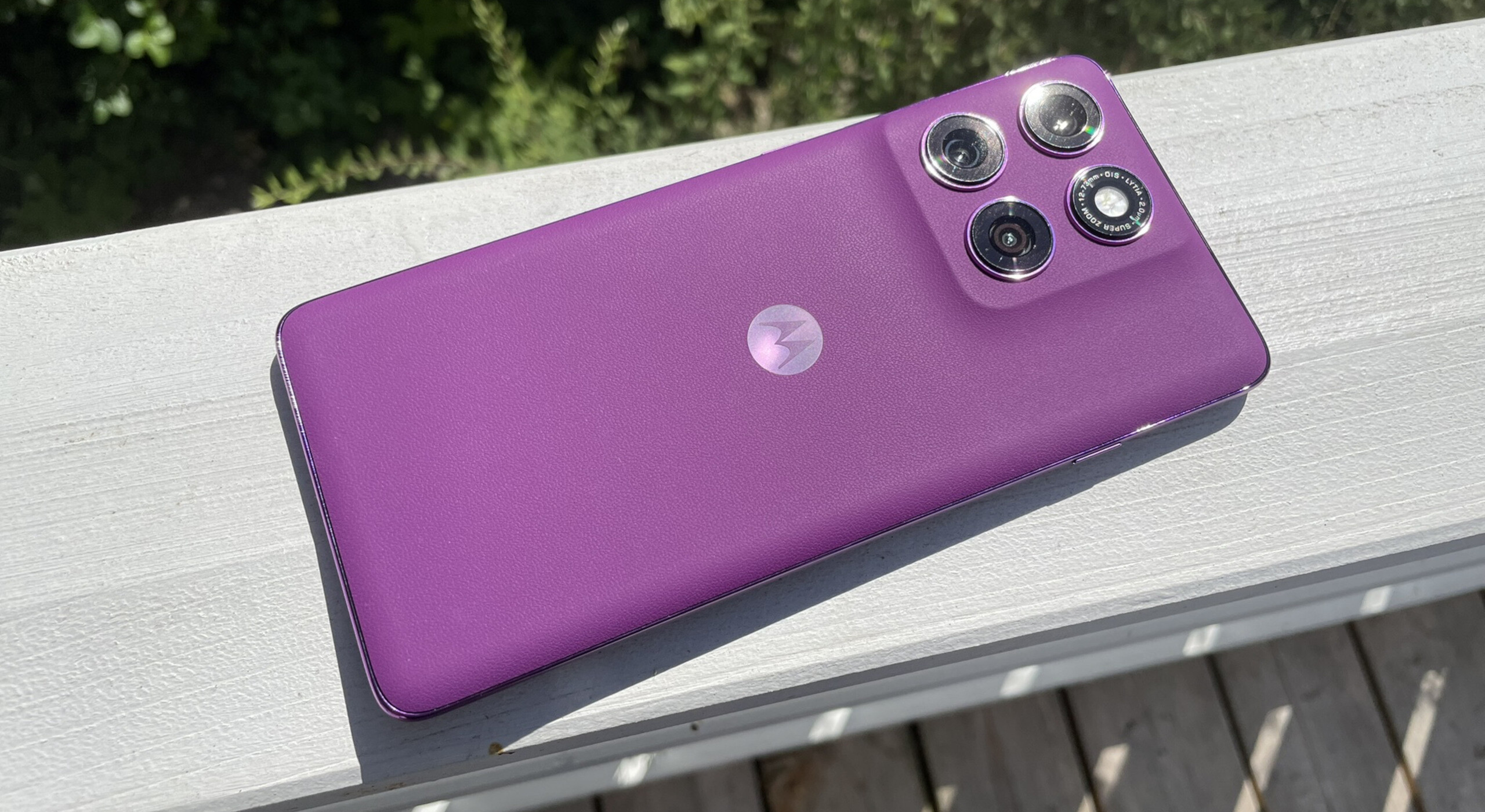

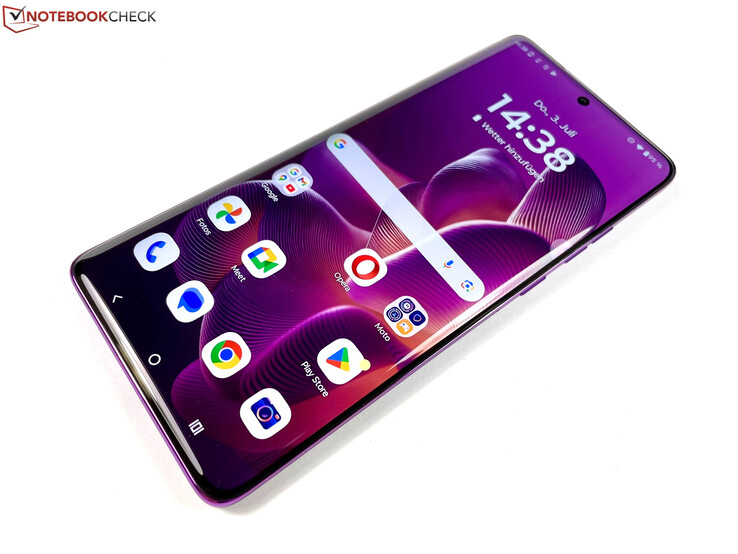



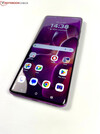




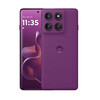




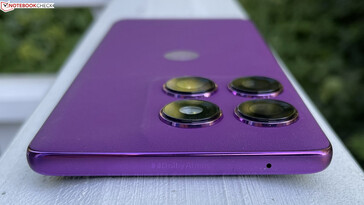


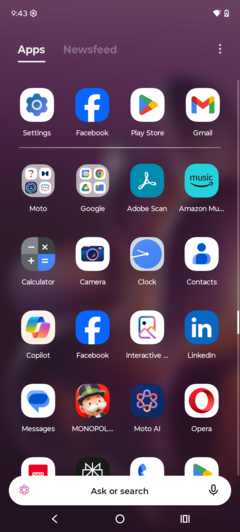
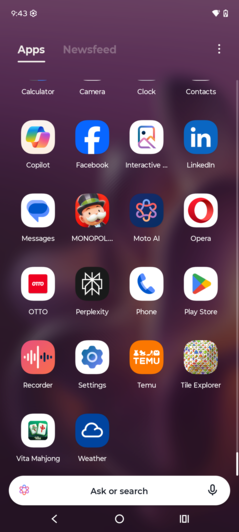

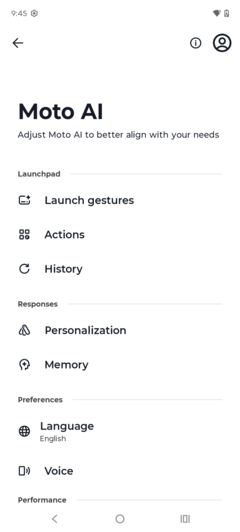

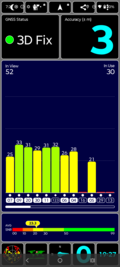
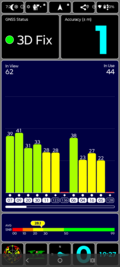
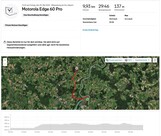

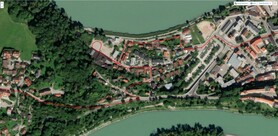

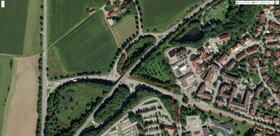
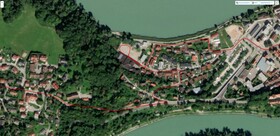


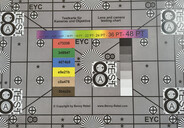

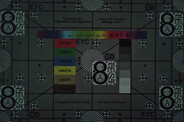
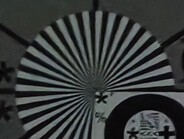

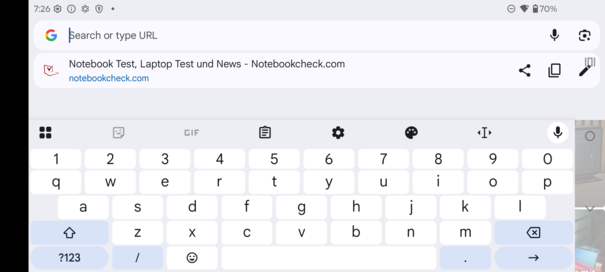
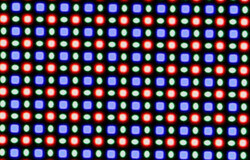
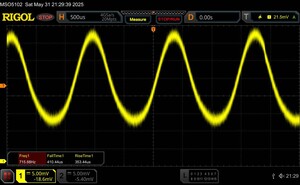





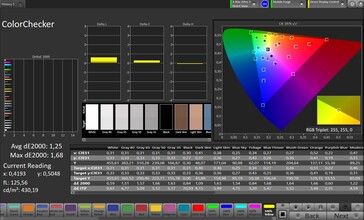
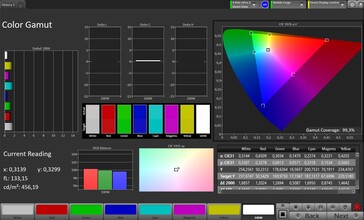
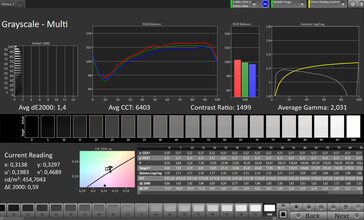
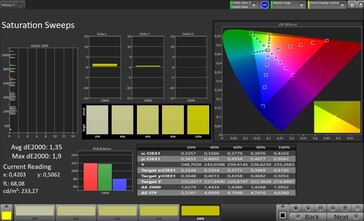
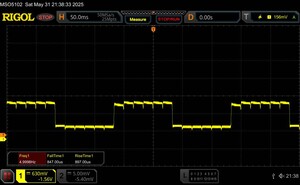
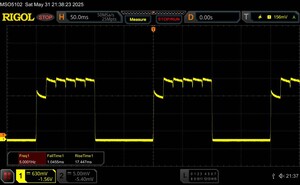

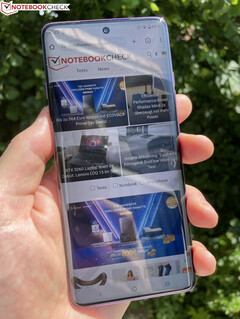
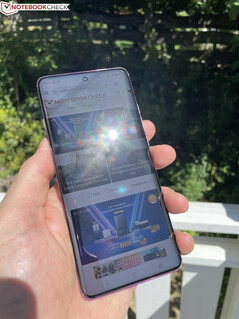


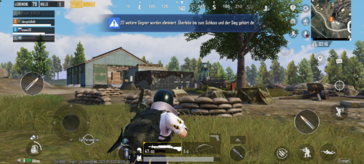
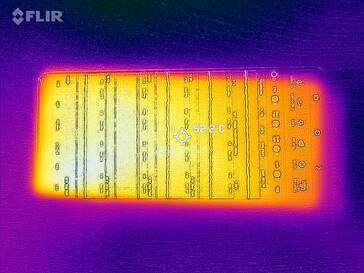
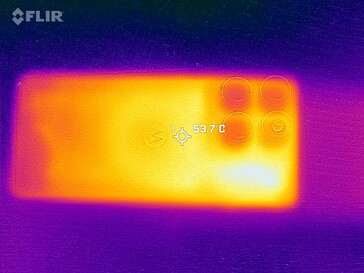
 Total Sustainability Score:
Total Sustainability Score: 




